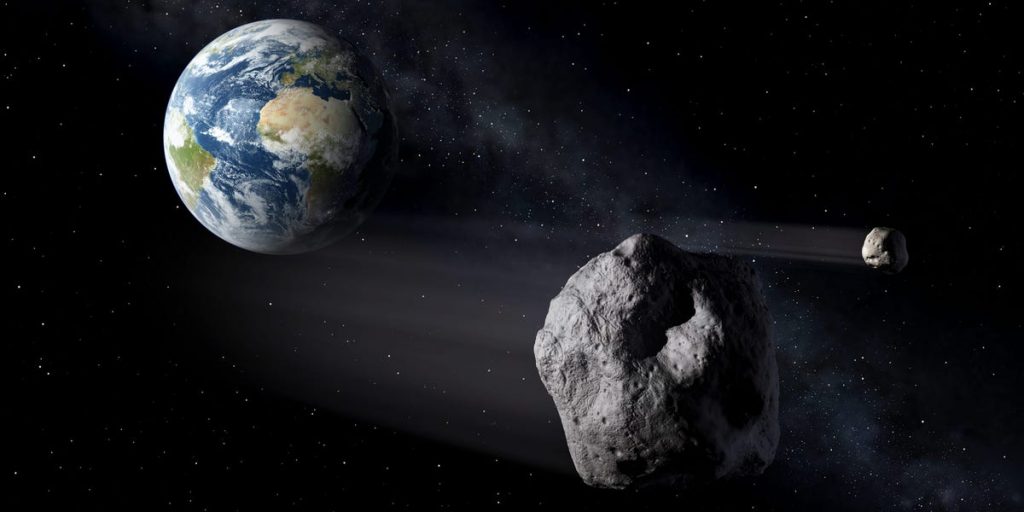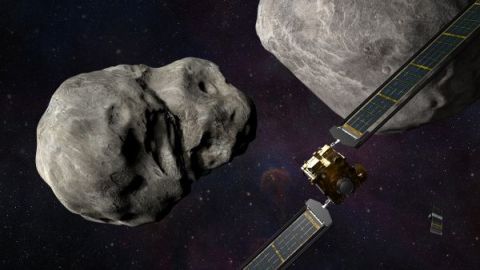NASA is about to launch a new space probe on a long journey to its eventual demise.
NASA’s spacecraft will blast off into space aboard SpaceX’s Falcon 9 rocket. And this isn’t just any old spacecraft. This spacecraft, unlike other robotic explorers, will not return the scientific secrets of the universe. Instead, it’s designed to fail.
DART (Double Asteroid Redirection Test) is NASA’s test run of a modernistic planetary defence system to protect Earth from incoming asteroids by slamming spacecraft into them. The DART mission’s goal is direct and clear: NASA wants to know if our planet can collide with an asteroid and avoid being wiped out.

As a proof of concept, the 4-foot (1.22 m) vast spacecraft will collide with Dimorphos, a small asteroid orbiting Didymos, a larger asteroid. According to NASA, the impact will result in an explosion of between 22,000 and 220,000 pounds of rock material, and Dimorphos will orbit the larger rock at least 73 seconds faster than before.
The floating rock poses no threat to the planet. However, if DART is likely to succeed in destroying Dimorphos, scientists will have devised a viable strategy for defending against dangerous asteroids. There are currently no hazardous Earth-bound asteroids known to scientists, but NASA predicts that only about 40% of asteroids 140 metres (450 feet) or larger have been discovered.

“The first test is testing our technological ability to hit the asteroid. And the second test tested the response of a real asteroid to being hit. The first test ends, and the second test starts at the moment that the spacecraft is smashed to bits,” said Tom Statler, a NASA astrophysicist working on the mission.
DART is scheduled to launch from Vandenberg Space Force Base in California aboard a Falcon 9 rocket at 1:20 a.m. ET (0620 UTC) on November 23rd and will arrive in September 2022. On NASA TV, you can watch the first liftoff attempt live.
DART will travel at breakneck speed toward a pair of asteroids for ten months. After that, DART’s goal is to reach the moonlet. It’s much smaller at 525 feet (160.02 m) wide than its 2,500-foot (762.00 m) companion. So even though the impact will occur 6.8 million miles from Earth, astronomers can use their telescopes to observe the asteroid’s orbit shift.

If the mission goes successful, it may prevent an asteroid from colliding with our planet. However, experts estimate that NASA would require at least five to 10 years’ notice of an Earth-bound asteroid before launching a mission like DART. Since it requires years to develop a spaceship, followed by months or years of travel time. As a result, NASA is developing the Near-Earth Object Surveyor, a telescope that will spot dangerous asteroids with an adequate time lag.
DART’s success will be determined later by astronomers. In 2026, the European Space Agency plans to launch Hera, a follow-up mission to examine Didymos and Dimorphos. Hera will look into the collision’s repercussions. Moreover, it has been designed to map Dimorphos, determine its mass, and study the DART crater.
This article was originally published by Business Insider.


